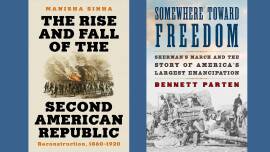These amongst the most important in Boston’s history forever impacted Boston’s reputation to its residents and to the whole country. It was a cauldron of divisions by race and class and this obscured steps forward that were taken...
Boston’s Black community with leaders like Ruth Batson, Ellen Jackson, and Tom Atkins did a 10-year campaign starting in 1963 to try to address severe educational inequities. The Boston School Committee headed by Louise Day Hicks disputed, delayed, denigrated, and rejected all these proposals.
Finally in 1972, the NAACP filed a case in federal court on behalf of 14 parents and 43 children that became the Tallullah Morgan vs. James Hennigan case. Judge Garrity ruled on June 21,1974 that the Boston School Committee had segregated the schools and ordered them desegregated.
Busing began on September 12,1974. It was met with fierce resistance from white anti-busing organizations for the next 4 years. This included demonstrations, motorcades, rallies, and electing more anti-busing politicians to office.
Black students integrating white high schools in South Boston, Hyde Park, Charlestown, and Roslindale faced racial epithets, rocks thrown at school buses, and fights started in the schools. This spilled over into the neighborhoods with a number of violent attacks and some retaliations.
Most of the schools did open and remain peaceful. Judge Garrity also ordered many notable education reforms.
Some change started to come when 3 anti-busing politicians lost their elections and the first Black person was elected to the Boston School Committee in 1977.
This is part of a program hosted by the Boston Public Library and the Boston Busing & Desegregation Initiative commemorating the 50th anniversary of Boston desegregation and busing.



